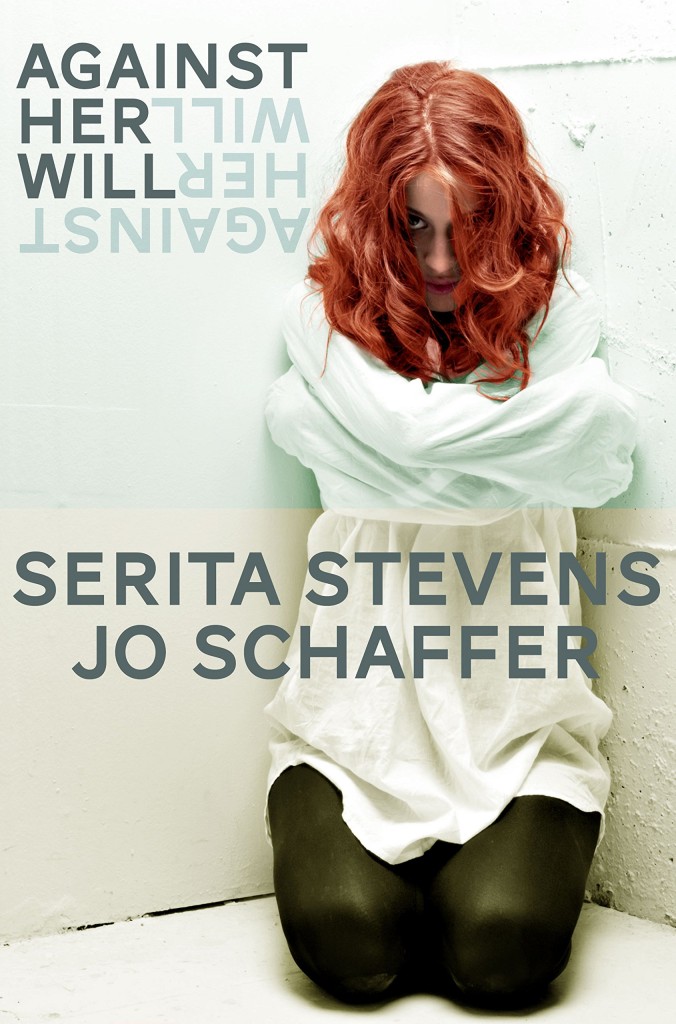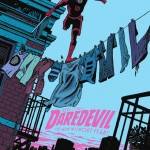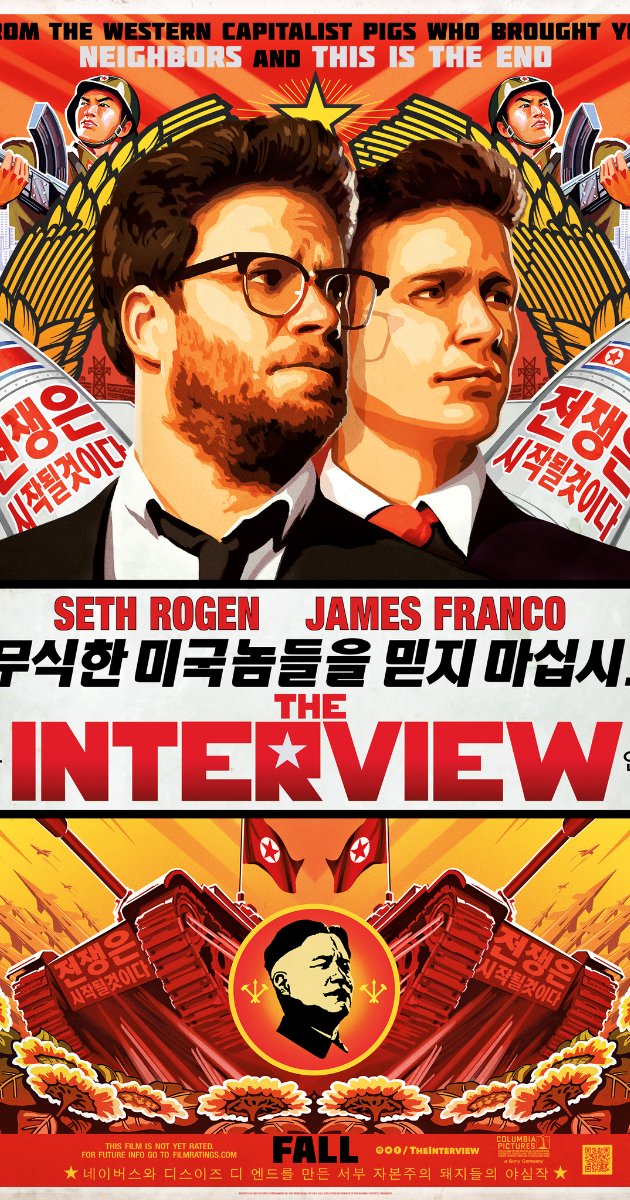I’m writing this from New Orleans, the land of dreams and nightmares. I’m going to be posting about my time here later in the week.
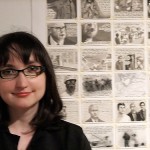 In the meantime, allow me to introduce you to an amazing artist and writer, Katherine Wirick. A few weeks ago, I attended S.P.A.C.E. con, an Indie Comic-Con convention. Katherine’s work drew me in because she published a whole graphic novel in an impressive, painting size piece of art. When I took time to read her work, No One is Safe, I cried. The story is about Katherine telling about her father’s role as an eye witness to the Kent State massacre. As she wrote the story, her father got sick with cancer, given to him by his experience in working with military chemicals. She tells that story as well.
In the meantime, allow me to introduce you to an amazing artist and writer, Katherine Wirick. A few weeks ago, I attended S.P.A.C.E. con, an Indie Comic-Con convention. Katherine’s work drew me in because she published a whole graphic novel in an impressive, painting size piece of art. When I took time to read her work, No One is Safe, I cried. The story is about Katherine telling about her father’s role as an eye witness to the Kent State massacre. As she wrote the story, her father got sick with cancer, given to him by his experience in working with military chemicals. She tells that story as well.
All that in one graphic novel/painting? Yeah, and it’s pretty amazing. When I get some cash, I’m buying a full on print. Normally, I try to keep these interviews short, but our conversation turned up a bit more things I want to discuss on this blog. So, enjoy the conversation…..
GGR: Describe your journey from wanting to be a painter to Graphic novels and comics. How did that come about?
K: I didn’t have any serious art education until I went to the Columbus College of Art and Design. The main reason I wound up there was that I didn’t really want to do anything except draw, but there was the added side benefit that they didn’t care what was on anyone’s high school transcript, and there was nothing on my transcript because I had dropped out halfway through ninth grade. That made it functionally impossible to get into most universities but CCAD just wanted to know if I had my GED or not. I knew, when I went there, what I wanted to do, which was comics, so I majored in illustration, but although I got to know some really great professors and students, it wasn’t a perfect fit for me, because I’m not really an illustrator in the usual sense. I don’t have any interest in producing pictures to accompany someone else’s text.
I wound up at the Pennsylvania Academy of the Fine Arts primarily because I wanted to draw better. I probably would never have even heard of it except that my husband had gone through their undergrad program, and he came out with a set of drawing and painting skills that I fiercely envied. I wanted was the kind of education that artists got during the golden age of illustration. A lot of great illustrators were associated with PAFA. High modernism, the rigid doctrine of modernism, dealt a hard blow to that kind of art program (literally–during the ’60s people were smashing the statues in PAFA’s cast hall) and there really aren’t many places outside of PAFA where you can get that education anymore.
So I went to PAFA and for the first year I was painting sort of by default. I love painting, but it wasn’t enough. I spent a whole year on one painting and it was only marginally successful and by the time it was done I had realized: this is ridiculous, I want to tell stories, I want to do it with words and pictures, I want to make comics.
GGR: Did that result in some struggles and clashes with your professors?
K: It did. Students on the whole were receptive–undergrads in particular thought it was awesome, so the future is safe for comics and we should all feel good about that. And among the faculty, Renée Foulks and Dr. Kevin Richards were incredibly supportive from the very beginning and the piece was far better for their contributions than it would’ve been otherwise–without them it probably wouldn’t even have happened. It was during one of Kevin’s lectures that I first got the idea for No One Is Safe. And the curators of contemporary art at the PAFA museum, which has a loose association with the school, bought it from me, and it’s in the permanent collection now.
My final critique turned into an argument between faculty who thought it was no good–I had one guy say to me, “If I were you, I would walk away from this”–and faculty who liked it (at least in theory; a lot of them hadn’t read it). And a visiting artist who saw No One Is Safe half-finished got really excited about it, and described it to some of his colleagues, and later reported back to me, in innocent shock and confusion, that they had sneered at the very idea.
There’s an antipathy in the traditional fine arts (painting and sculpture) to work that is infinitely reproducible, and it’s well-established and dates back to the Industrial Revolution, and if you want to know more about that you can read Walter Benjamin, who was much smarter than me and explains it better. At PAFA I was occasionally made aware of that; once I brought up Mike Diana in a class and somebody said, “If he didn’t want to go to jail he shouldn’t have made copies of his work.” So the fine arts find comics problematic in the first place. But that wasn’t what was at issue withNo One Is Safe, I don’t think; I didn’t even start thinking about reproducibility until I was halfway done. It was a one-of-a-kind thing destined for a gallery wall, just like a painting.
It might have had to do with communication, specifically how much communication I was attempting. A faculty member told me, “When people go into an art gallery, they don’t expect to have to read.” Jenny Holzer suggests otherwise, but there’s resistance to the idea that written words can be visual art. More than that, some people in the fine arts really disdain the idea of direct communication. Your work is supposed to mean something but you’re supposed to keep the meaning coded, you have to express yourself elliptically. There’s some snobbery at the base of it, the refusal to allow just anyone to understand your art and the rejection of work that has broad public appeal. That doesn’t mean that artists are snobs, it means that fine art as a form suffers from a status anxiety which dates back to the French Revolution. “Art for art’s sake” came about in response to an existential crisis which was never really solved.
Greil Marcus once wrote that in Heartfield’s work Hitler, Goering et al. “were not art subjects… this was real speech about real things that happened to real people.” That was what I wanted: I didn’t want to make art, I wanted to speak. The Ohio National Guard killed Bill Schroeder and the U.S. Army gave my father cancer and I had no interest in putting veils over anything.
GGR: How did your dad help in the writing of No One is Safe?
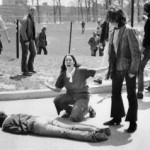 K: Dad was very interested in the project from the beginning. He liked to tell that story, not because it felt good to relive that weekend but probably because he liked to educate people, and a lot of people, even from my parents’ generation, are uninformed or misinformed about what exactly happened at Kent. I asked him to go up to Kent with me and give me the historical tour because he’d already done that for me once before, when I was an undergrad. I don’t think there was any specific occasion that prompted it, we just went up and visited the campus, and for years after I thought, “Gosh, I wish I had a recording of that,” so, later, working on this art piece kind of gave me an excuse to do something that I’d been wanting to do for ages. We all went up, Mom and Dad and my husband and me. It was May 29, 2010. The tour lasted for about two and a half hours, and that was mostly him talking and me interjecting with questions.
K: Dad was very interested in the project from the beginning. He liked to tell that story, not because it felt good to relive that weekend but probably because he liked to educate people, and a lot of people, even from my parents’ generation, are uninformed or misinformed about what exactly happened at Kent. I asked him to go up to Kent with me and give me the historical tour because he’d already done that for me once before, when I was an undergrad. I don’t think there was any specific occasion that prompted it, we just went up and visited the campus, and for years after I thought, “Gosh, I wish I had a recording of that,” so, later, working on this art piece kind of gave me an excuse to do something that I’d been wanting to do for ages. We all went up, Mom and Dad and my husband and me. It was May 29, 2010. The tour lasted for about two and a half hours, and that was mostly him talking and me interjecting with questions.
It took a long time to transcribe the recordings but once I had the transcript, which was done by midsummer, I didn’t ask for a lot of input from him. I didn’t ever show him the script. At a certain point I had to kind of struggle with the idea that he would see it when it was done, because of how much emotion was going into it, from my end. We didn’t talk about our feelings a lot. I never questioned that he loved me or that he was proud of me but we didn’t talk about it.
People always assume that it was his sickness that prompted me to take on the whole project but it wasn’t. I just wanted to tell a story on a wall, and that was the best story I’d ever heard. I didn’t know he was sick until late September of that year, so I’d already been seriously engaged with No One Is Safe for four months at that point. By the time the piece was done he’d had surgery and chemo and we’d been told he was cancer-free. When he came to my thesis show where No One Is Safe premiered he was in really good shape, compared to what happened later.
GGR: How did your historical research into the Kent State shooting interact with your storytelling and art work?
K: When I started doing the visual research, I started with the photos on the Kent State library website, and one of the first things I found was a picture of a crowd of students with a guy in the background who could have been my dad, a tall guy with glasses and a mustache. So I sent him the picture and he immediately knew it was him, because he recognized other people in the picture who were friends of his. So that’s the photograph that I drew at the beginning and end of No One Is Safe.
When it came to historical research, the narrative of what happened when, I didn’t have to really strain myself because I wasn’t trying to write a comprehensive history with all perspectives represented. I was strictly working from my father’s point of view. I probably just assumed that everything he said was true, because of the kind of person he was, but in the end I found outside corroboration of almost all the details of his story. I did strain myself on the visual research. There was a moral dimension to how I drew these things; if you draw a few Guardsmen surrounded by a thousand angry students with rocks in their hands, you’re telling a different story than if you draw a whole battalion of Guardsmen advancing on a small crowd of defenseless kids. I studied photographs very closely, everything I could find. Photographs are never going to tell you all of the truth, but several hundred photographs from a half-dozen different cameras are probably going to converge on it.
GGR: How did your anger towards the idea of death and possible anger towards God influence No One is Safe?
K: If you’d asked me that two years ago, I would’ve said that God didn’t have anything to do with it. I would’ve used words like “the physical conditions of the universe,” time, death, etc. Until very recently I was calling myself an atheist. But I think at a deep level I’m not, because here’s the thing: I’m not angry that the Easter Bunny doesn’t exist. I am very angry that God doesn’t exist, and that’s a logical contradiction, it doesn’t make sense. Towards the end of No One Is Safe I say, “Death is no fucking friend of mine,” but if I’m really going to be honest with myself, I have to admit that when I say death, God is what I mean.
Obviously this is a personal struggle and I’m not out to start arguments or insult anybody. My father was a sort of Catholic Buddhist, which may be a contradiction in terms but he very definitely believed in God. But if we’re going to talk about my father–we’re talking about a man who wanted to serve his country, because that was what he believed was right. That was literally the only thing he wanted out of life, to render service. In exchange for that he got to die, slowly, without dignity, in excruciating pain. He was in great shape, he kept to a healthy diet, he never smoked, he didn’t drink, he had longevity in his family, and he should have had 30 more years. How am I supposed to live with that? People talk about “coming to terms” with loss. I don’t want to come to terms with it.
When he told me over the phone that he had cancer–with lots of reassurances that it had been caught very early and his was an abnormal case and the numbers I’d find if I googled cholangiocarcinoma didn’t mean anything–I thought, “Well, I can put this in the piece,” meaning No One Is Safe, which didn’t have that title yet. And then I thought what a hideous excuse for a human being I was to be thinking about art at a time like that. Months later, when the piece was almost done, I told my friend Brian Spies, an amazing artist who went to school with me at PAFA, about that sequence of thoughts, and Brian said: “If you were a doctor, you’d cure cancer. You’re an artist. This is what you do.”


